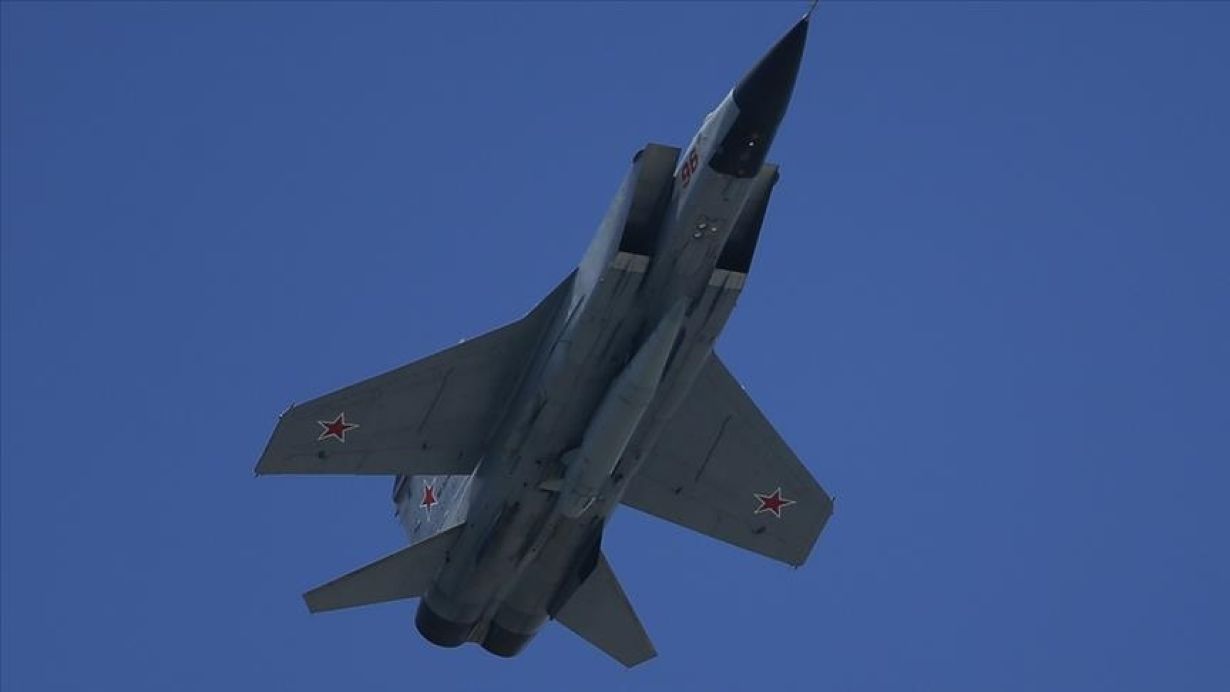The Russia-Ukraine war saw the maiden use of the Kh-47M2 Kinzhal’ Dagger’ air-launched high-speed ballistic missile. Along with all the world, the Chinese military-industrial complex has been closely following the war to assess the technology.
Chinese analysts call the Dagger, often claimed to be ‘invincible’ by Moscow, an outdated Cold War technology, and its performance in the war indicates it is no “wonder” weapon.
The legend of the Russian hypersonic long-range Kh-47 Kinzhal missile or ‘Dagger’ has long evoked fear and admiration among the country’s adversaries. Fired by MiG-31, the Kinzhal could reach speeds greater than Mach 10 and travel 1,500 to 2,000 kilometers while carrying a conventional or nuclear payload.
While the United States is still working to develop its hypersonic weapon, China has already developed and deployed ground, air, and sea-launched hypersonic variants.
The Kinzhal missile, with NATO name “Killjoy,” is believed to be so fast that the air pressure in front of the weapon forms a plasma cloud as it moves, absorbing radio waves. This makes the hypersonic weapons very hard to catch on radar systems.
Also, Russia has claimed that Kinzhal can be maneuvered to the intended target, unlike other hypersonic missiles. That is why they are already near their target when ground-based radar systems spot them. The Kinzhals can be launched from MiG-31K fighter jets, giving it the advantage of being launched from any direction.
The “Daggers” were used against Ukraine for the first time in March 2022. Russia launched six hypersonic missiles in one of the biggest aerial strikes on Ukraine to tilt the stalemate in the ground war.
It was, therefore, surprising when Russia switched to the Su-34 “Platypus” (NATO codename ‘Fullback’) to launch the Kinzhals. The Chinese expert discusses the development of the Su-34 as a Kinzhal carrier and the actual performance of the Kinzhal in combat.
The Diplomat analyzed the article in a leading Chinese defense magazine titled: “The Dagger Wielding Platypus: A Brief Discussion of the Su-34 Launching the Dagger Hypersonic Missile.”
Putin Introduced The Kinzhal Missiles In 2018
Talking about the upper hand Russia had over the existing and prospective Western air defense systems, Putin said, “The missile flying at a hypersonic speed, ten times faster than the speed of sound, can also maneuver at all phases of its flight trajectory, which also allows it to overcome all existing and, I think, prospective anti-aircraft and anti-missile defense systems, delivering nuclear and conventional warheads to a range of over 2,000 kilometers.”
The Western experts dismissed the claims as exaggerated, saying it was nothing but an air-launched ballistic missile.
‘Dagger’s’ Performance – A Chinese Assessment
The Chinese analysis concludes that both Russian and Ukrainian forces are showing signs of fatigue, and the West’s economic sanctions have started yielding results.
The prolonged war has impacted the Kinzhal’s use in combat as it was manufactured in small numbers. The economic strain, as the war enters its third year, means that there will be very few left in the inventory.
The analysis doesn’t see a hypersonic missile as a wonder weapon that can change the course of the war. Also, it is difficult for Su-34 “to launch [enough] Kinzhals to achieve effects at scale.”
The article in the Chinese defense magazine also indicates several issues with the weapon, which it categorizes as “outdated 1980s Cold War technology that is not hypersonic in nature”. Due to features of the Kinzhal’s design, “its ability to perform long-distance gliding in the atmosphere falls short.” Its maneuverability has also been questioned.
The Chinese analysts, while indicating the shortcoming in its ballistic trajectory, contend that the Dagger can be intercepted by advanced anti-missile systems presently in service. It was intercepted on May 4, 2023, when the Patriot anti-aircraft missile system shot down a Russian Kinzhal missile fired from a MiG-31K over the Kyiv region.
“A hypersonic missile, a ‘super weapon’ that Putin has been boasting about for many years. He showed cartoons to the whole world and said that ‘we can overcome any air defense system,’ but no.
“It turned out that the Patriots could shoot down Kinzhals. So goodbye, invincible weapon, I would say so,” a Ukrainian military expert, Oleg Zhdanov, had said of the direct clash between the Patriot air defense system and Kinzhal missile. The Chinese expert acquiesce that the US and Ukrainians are found to be true.
Along with its shortcomings, the Kinzhal missiles also face dwindling numbers. High cost and depleting stockpiles mean the Russian forces can deploy it only strategically, giving another advantage to Ukraine.

The Switch to ‘Fullback’ To Launch Kinzhals
The Chinese analysis indicates that Russia is using Su-34 to air-launch Kinzhal as the Russian fighter jet can fire the missile from well outside the strike range of Ukrainian air defenses. However, the advantage is limited as the Fullback is slower than the MiG-31, and the hypersonic missile’s weight also reduces the fighter bomber’s performance.
Air-launched Kinzhal provides it with greater range, deployability, and flexibility. Russia has developed missiles to counter the US theatre missile defenses, such as THAAD (Terminal High Altitude Area Defense).
The Chinese experts pointed out that air-launched hypersonic missiles rely heavily on satellite navigation systems to guide the missile in real time. This could put Russia at a disadvantage as its GLONASS satellite navigation system is in “a state of limbo” and the insufficient number of satellites in orbit reduces “navigational accuracy”.
In contrast to this, the West has superior information technology to get a warning about impending attacks by “Fullback” and intercept them. This is indicated by the huge number of Su-34s that Russia has lost in the war.
- Ritu Sharma has been a journalist for over a decade, writing on defense, foreign affairs, and nuclear technology.
- She can be reached at ritu.sharma (at) mail.com
- Follow EurAsian Times on Google News